IAGOS (In-Service Aircraft for a Global Observing System) is a European programme established in 1994 to assess atmospheric composition, air quality and climate, using commercial jets as research platforms. There are currently 10 widebody Airbus A330 and A340 family jets from seven airlines deployed in the project, with another 10 having previously been used, again from seven participating airlines.
The Lufthansa A350 selected for the IAGOS programme, registered D-AIXJ, is almost seven years old, and will add a new-generation airliner to the research fleet.
A measuring laboratory weighing two tonnes is being developed for the next phase of the programme, and once fitted with some 20 instruments, will be installed in the cargo hold of the A350 on selected scheduled flights from late 2025.
The onboard laboratory will be connected to the air intake system on the jet’s outer fuselage through permanently installed pipes, and used to measure over 100 trace gases, aerosol and cloud parameters from the ground up to the tropopause atmospheric region, at altitudes between nine and 13 kilometres.
The IAGOS programme is led by the Jülich Research Centre, one of Europe’s largest research organisations, which combines the expertise of global partners in weather services, airlines and the broader aviation sector.
The programme combines the complementary concepts of two research projects: MOZAIC (Measurement of Ozone, Water Vapour, Carbon Monoxide and Nitrous Oxides by Airbus In-Service Aircraft), which was funded by the European Commission between 1993 and 2004, and CARIBIC (Civil Aircraft for the Regular Investigation of the Atmosphere Based on an Instrument Container).
Lufthansa, which with Air France was an IAGOS launch partner in 1994, has gathered climate-related data for research on more than 35,000 of its passenger flights over the three decades.
Together with the Jülich Research Centre and Karlsruhe Institute of Technology, the Lufthansa Group has fitted a total of six Airbus aircraft with measuring equipment since the programme was inaugurated to collect information about atmospheric conditions during scheduled flights.
Lufthansa currently has two aircraft, an A330 and an A340, deployed in the programme, as well as another A330 from sibling airline Eurowings Discover.
On December 9, the Eurowings jet was used to gather climate data during a 10-hour, 45-minute flight from Frankfurt to Orlando, Florida. The information was collected continuously while the aircraft flew at an altitude of more than 10,000 metres (33,000 feet) over a distance of 7,600 km.
Other airlines currently participating in the programme are Taipei-based China Airlines, with two A330s, and Air Canada, Air France, Cathay Pacific, Hawaiian and Iberia, each with one A330.
After each flight, climate information gathered by the aircraft is sent automatically to the database of Centre National de la Recherche Scientifique in Toulouse, France, from where it is accessible for global research.
The data is currently used by about 300 organisations worldwide to provide fresh insights into climate development and atmospheric composition and help refine climate models and improve weather forecasting.
“We are proud to have been able to make a significant contribution to climate research for 30 years,” said Lufthansa Group’s Chief Technology Officer, Grazia Vittadini. “Through our commitment, we are helping to sustainably improve climate models and weather forecasts. Scientifically-sound findings are the basis for targeted measures on the path for more sustainable aviation.”
GE/NASA contrail research flights
In the US, GE Aerospace and NASA have built upon a 50-year collaboration by performing two research flights for their Contrail Optical Depth Experiment (CODEX) in which three-dimensional imaging was generated of contrails created by GE’s Boeing 747-400 Flying Test Bed aircraft.
The 747 was trailed by a G-111 aircraft from NASA’s Langley Research Centre in Virginia, which deployed Light Detection and Ranging (LiDAR) technology to scan the wake of the larger jet, enabling researchers to use new imaging to better understand how contrails form and behave.
During the flight tests, 3D images were generated of contrails from all four CF6 engines on the 747. GE Aerospace was also able to isolate the contrails from a single engine on the test jet.
The flights expanded the company’s capabilities ahead of flight tests it is planning during this decade to assess the performance of new commercial aircraft engine technologies, including Open Fan, advanced combustion designs and other propulsion systems.
“Understanding how contrails act in flight with the latest detection technology is how we move innovation forward,” said Arjan Hegeman, GE Aerospace GM of Future Flight Technology. “These tests will provide critical insight to advance next generation aircraft engine technologies for a step change in efficiency and emissions.”
Dr Rich Wahls, manager of NASA’s Sustainable Flight National Partnership, welcomed participation “on this first-of-its-kind flight experiment” in helping to reduce the impact of contrails.
“NASA is advancing the scientific understanding of contrails to improve our confidence in future operational contrail management decisions that consider overall climate impact and economic trades,” he said.
NASA, German Aerospace Centre (DLR) and contrail forecasting and management company SATAVIA, are also working together on atmospheric forecasting to identify the best conditions for studying the formation of contrails. SATAVIA was recently acquired by Aerospace Carbon Solutions, a division of GE Aerospace.
In this collaboration, DLR will help to identify the altitude and dimensions of contrail-forming regions, so that flight tests can be conducted using the LiDAR technology to improve contrail prediction, while SATAVIA will use the flight test results to validate and improve its numerical weather prediction capability, used to forecast contrail formation conditions.
At this year’s Farnborough Airshow, the chief technology officers of GE Aerospace, Boeing, Airbus, Dassault, Rolls-Royce, RTX and Safran called for government support to expand research that enhances scientific understanding of aviation non-CO2 effects such as contrails, nitrogen oxides, sulphur, aerosols and soot.
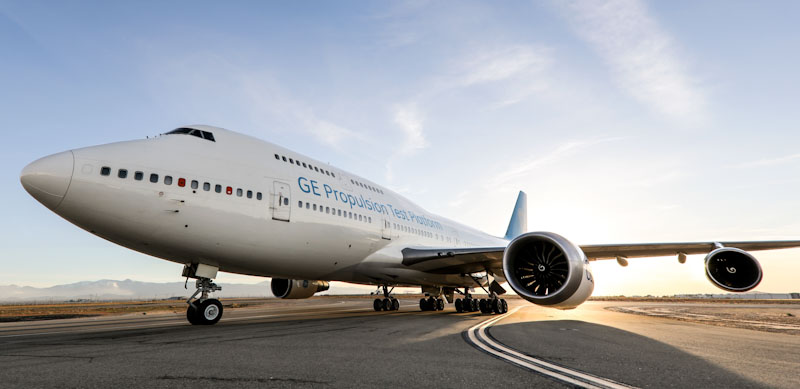
Top photo: The first IAGOS system has been in use on a Lufthansa Airbus A340-300 since 2011
Bottom photo: GE Aerospace’s 747 Flying Test Bed


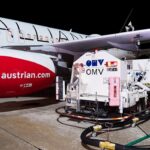
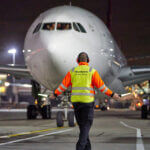
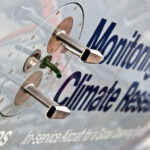



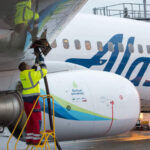
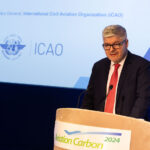
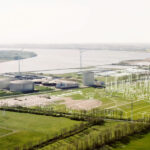
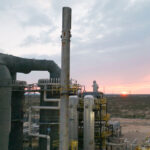
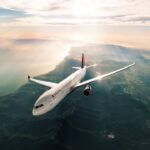
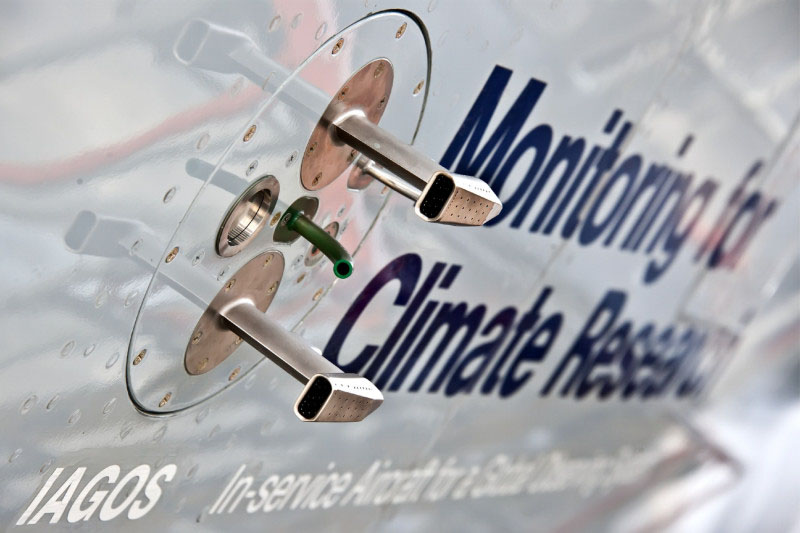


More News & Features
Progress on decarbonising the airline sector has been slow this year, says IATA chief
EASA releases status report on Europe’s SAF production and readiness to meet blending targets
UK government sets out new Jet Zero focus and launches consultation on CORSIA global emissions scheme
T&E joins aviation and climate scientists in urging action to reduce warming contrails
New study highlights differing strategies and barriers to decarbonising aviation in UK and Europe
Commentary: China’s fair and equitable solution to civil aviation’s climate challenge